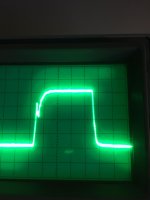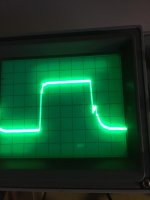hi Perry
yes oddly enough there were zero parts needing replacing on the driver boards. even the blown channel had a fully functional driver board. my inexperience/misdiagnosis led me to remove the driver boards bugger a trace or 2, but needless to say, i was impressed.
im officially a fan of the tl072+LM319 driver board
yes oddly enough there were zero parts needing replacing on the driver boards. even the blown channel had a fully functional driver board. my inexperience/misdiagnosis led me to remove the driver boards bugger a trace or 2, but needless to say, i was impressed.
im officially a fan of the tl072+LM319 driver board
Hi Perry
i have purchased a scope today and am very excited to start using it.
i cracked open the bottom plate of my SSA class D(X) amp and scoped the high and low side drive signals.
from what barevids says, the low side seems perfect. im not too sure about the high side. this design of amp uses the lm319 and tl072 pair driver configuration. i have a HIP4080 amp that im about to crack open just to compare drive waves.
i have attached the pics below, please advise if these drive waves are generally correct.
kind regards
i have purchased a scope today and am very excited to start using it.
i cracked open the bottom plate of my SSA class D(X) amp and scoped the high and low side drive signals.
from what barevids says, the low side seems perfect. im not too sure about the high side. this design of amp uses the lm319 and tl072 pair driver configuration. i have a HIP4080 amp that im about to crack open just to compare drive waves.
i have attached the pics below, please advise if these drive waves are generally correct.
kind regards
Attachments
Last edited:
You can't determine if the drive signal is good on AC coupling since you have to know how close it gets to the voltage on the source leg of the transistor.
Look at the swf file in the performance technique folder of the tutorial for waveforms. Maximize and right-click to zoom in.
Look at the swf file in the performance technique folder of the tutorial for waveforms. Maximize and right-click to zoom in.

